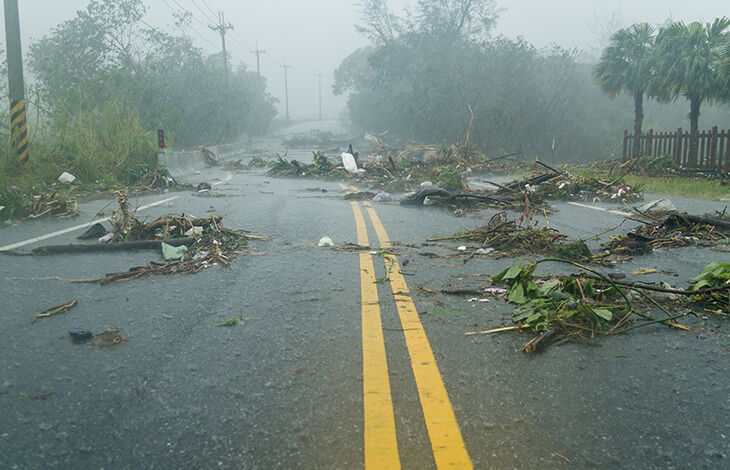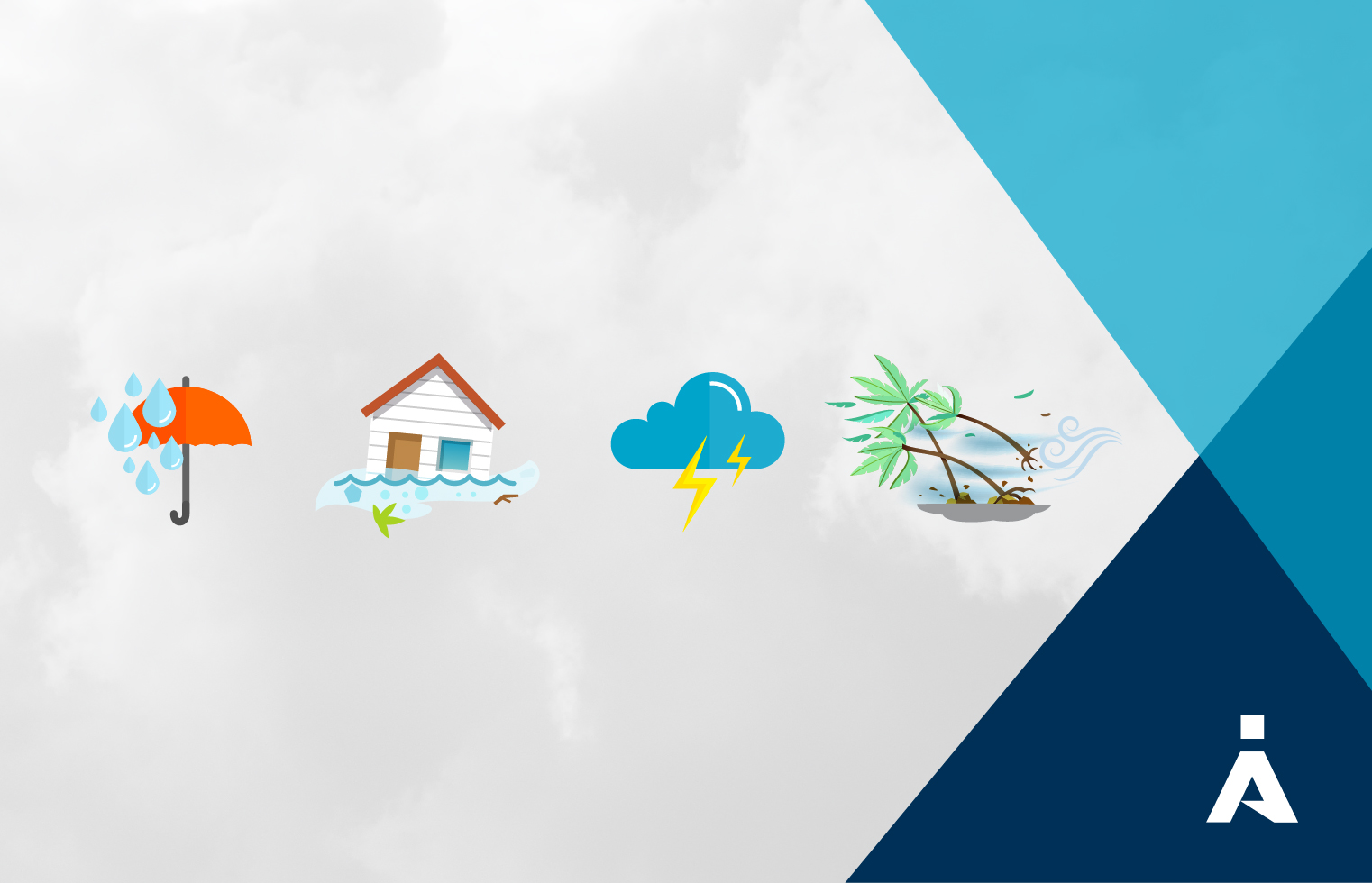
Planning for Storm & Cyclone season
The Storm & Cyclone season has started (October to April) bringing with it severe thunderstorms, tornadoes, cyclones and damaging hailstones, as seen recently in South Australia, Victoria and Queensland. The BOM (Bureau of Meteorology) has declared a La Nina event that is likely to result in higher than normal rainfall and cyclone activity.
So reviewing your weather related risks and managing these is important for your business, as well as employees and customers. Secondly, you need to have a plan that can be put into action, if faced with clean up and damage.
Wind, thunderstorm and flood preparation
These are really common-sense strategies that help to protect your business, as well as your employees and customers. For example, do you know what the main weather risks are in your area? Have you checked whether your buildings are in a storm or flood prone area and have a plan to move stock, plant and machinery from flood waters?
There are several state government websites with checklists or specific information for your area. Insurers also provide risk management advice like this from Zurich Insurance
Of course, there’s the usual preparations for storm season, such as getting a builder to check that the roof, windows and doors are able to handle storms in your area. Also clearing out gutters, as well as trimming trees that are too close to buildings. It also pays to discuss your risk management with your insurance specialist, because they can provide valuable insights and information that can help to minimise your risks. They can also advise about Business Interruption Insurance and discuss the type of coverage available for flood damage.
Emergency plans - basics
If an extreme weather event is imminent, you need an up to date emergency plan, also ensure that you have discussed this with your employees and they understand their roles.
The plan should include:
- Monitoring local radio for updates on severe weather warnings in your district;
- Preparing a plan that includes key people, contact info and their roles, including insurance details and adviser information;
- Rehearsing responses for specific weather events and evacuation procedures;
- Pre-packing an emergency kit that includes a portable radio, torch, spare batteries and a first aid kit;
- Having emergency equipment on standby (e.g. tarpaulins, rope, nails, hammer, timber, sandbags) to protect plant, stock and other building contents in the event that the storm damages the roof or wall structure;
- Isolating water, gas and electrical power supplies when severe storms are forecast to prevent further damage and personal injury from ruptured pipes or fallen power lines.
It might also be good to speak with other business owners in your building or immediate area, so that you can work with each other, if needed. Maybe another business has a large warehouse that could be used to store vehicles undercover? Maybe someone else has a vacant building in another suburb that’s above the flood waters where vital equipment can be stored temporarily?
Sometimes, however, despite doing all you can to minimise your risks, the worst still happens. Building’s roofs are lost, stock is water damaged or powerlines are brought down. That’s why insurance is important to manage the financial risk of storms and cyclones. A discussion with your insurance specialist will provide peace of mind and a financial safety net if needed.
To discuss storm and flood insurance for your business, talk to an insurance professional today and find your local adviser.
Important Information
This communication including any weblinks or attachments is for information purposes only. It is not a recommendation or opinion, your business or personal objectives, financial situation or needs have not been taken into account. This communication is not intended to constitute personal advice.
We strongly recommend that you consider the suitability of this information, in respect of your own personal objectives, financial situation and needs before acting on it. This document is also not a Product Disclosure Statement (PDS) or a policy wording, nor is it a summary of a particular product’s features or terms of any insurance product. If you are interested in discussing this information or acquiring an insurance product, you should contact your insurance adviser to obtain and carefully consider any relevant PDS or policy wording before deciding whether to purchase any insurance product.


